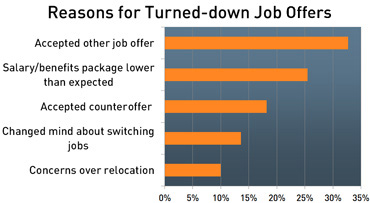Counseling Out is the process of providing enough regular, candid and honest feedback that an employee quits before being fired. Most managers wait too long to fire under-performing employees. It's better for the employee, manager, and company if the employee quits. If Counseling Out is done correctly, your problem employee will find a job and quit before you have to take action. There are usually two scenarios where counseling out can be used: 'Good Employee, Wrong Job' or 'Bad Employee, Really Trying'. Read two true counseling out stories at the end of this article.
Document Everything
Any time an employee may need to be fired, you need to document all communication. Regardless of how hard you try to help your employee or be nice, there is still the risk of a wrongful termination lawsuit. To protect yourself from wrongful termination lawsuits, you should implement some basic Human Resources' best practices. If you are unfamiliar with these practices, consult an attorney to learn how you can protect yourself.
4 Steps to Counseling Out
1. Establish a Counseling Out Timeline
This first step to Counseling Out an employee is to establish your timeline. Four weeks is usually sufficient. Because you want the right people on your team, do not extend this process for months. When you decide that you are going to start, put an appointment in your calendar as your deadline. If he/she does not quit by your deadline, fire the under-performing employee.
2. Start with Honest Feedback
It is usually easy to give positive feedback and bonuses, but difficult to cut someone's pay or give a bad review. Although it is sometimes easier to ignore a problem and hope it goes away, that is the wrong approach. Failing to give reviews, being falsely positive or giving undeserved bonuses leads to your team's failure. If you choose to counsel out an employee, honest reviews are vital. Start with an employee meeting to give honest feedback. Prepare a list of the problems with examples to help communicate the message.
This is your time to present all of the issues and let the employee know that the issues can not continue to exist. You may consider letting him/her schedule a meeting with you on the following day if the employee feels the need to explain or defend himself/herself. After you finish communicating your list, both you and your employee should sign and date the document of problems, indicating that it has been clearly communicated. If you believe there is a chance for improvement, you may choose to offer a performance improvement plan. Do not feel obligated to offer such a plan. There are some employees who are just not a good fit for a certain position. Finally, close this meeting with a clear statement like, "John, now would be a good time to start looking for another job."
3. Weekly Reviews
Schedule weekly meetings with your employee through the end of your Counseling Out Timeline. Be careful to not share your timeline with the employee, in case you decide that an earlier than planned dismissal is needed. Use these weekly meetings to make sure that he/she is still providing at least a neutral contribution to your company, and to inquire about the employee's job hunt. If the underperforming employee's attitude or performance is getting worse, point it out and make sure he/she understands that he/she still has a job to do. It is okay to encourage the employee in the job search, to ask what job search tools he/she is using, to offer your name as reference
4. Time's Up - Time to Fire the Underperforming Employee
Hopefully the employee finds a job before the end of your timeline; but if he/she has not, you need to deliver the news that the underperformer is fired. By this point, the employee should be on his/her way toward finding a new job and may already have interviews or a job offer. It is not usually appropriate to offer a 'layoff' or severance package to someone who has been Counseled Out. While it may feel good to do so, you have already given the person a working severance of sorts. Deliver the message, say goodbye, and thank the employee for his/her work.
True Story #1: Good Employee, Wrong Job
"A few years ago I had an employee who had gotten into a rut after four years in the same role. He and I candidly discussed the issues and determined that we needed to find him another opportunity. I talked to other managers, recommending him for a few open positions; and within a month he was on a new team. On that team, he has performed extremely well, is much happier, and is making a great contribution to the company."
True Story #2: Bad Employee, Really Trying
"Last year, I had an employee who was underperforming. I noticed the problem after only a month of employment. Because the job was difficult, I decided to keep encouraging and training, rather than making a quick dismissal. Although she was really trying, she had trouble getting the job done correctly and efficiently. After a few more months of problems, I decided to start four weeks of Counseling Out. She did not quit, but had interviews and good job leads by the time I fired her. Although she pretended to act surprised in our final meeting, she confirmed to former co-workers that she already had another job offer. I did everything possible to help this employee find a new job and felt good about the decisions."
This article is courtesy of Careerbuilder.com and was contributed by Tiffany Worstell, Vision Staff Recruiter-Nationwide. To contact Tiffany, call (540) 491-9112, or email tworstell@etsvision.com. To find out more visit www.etsvision.com.

